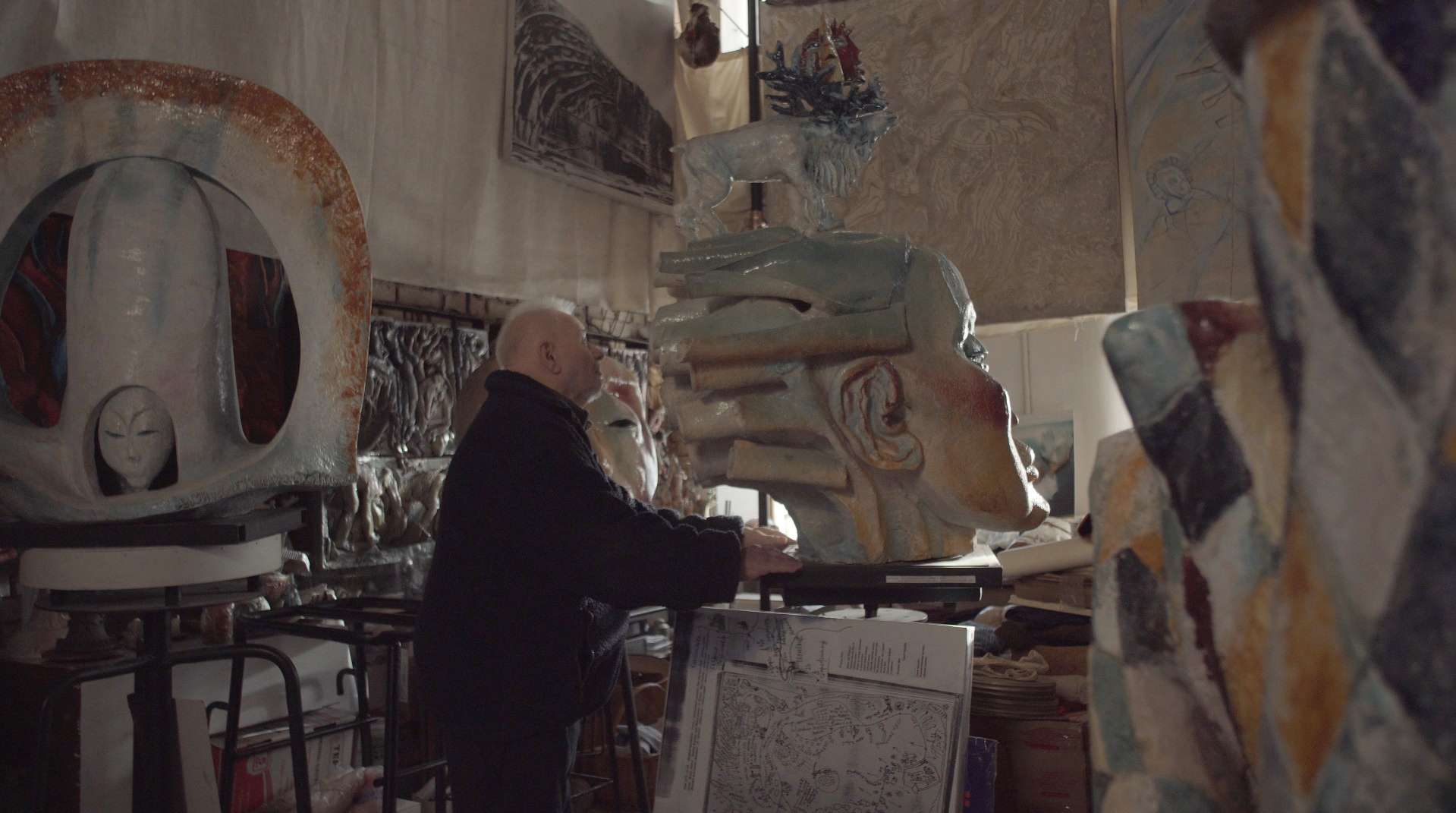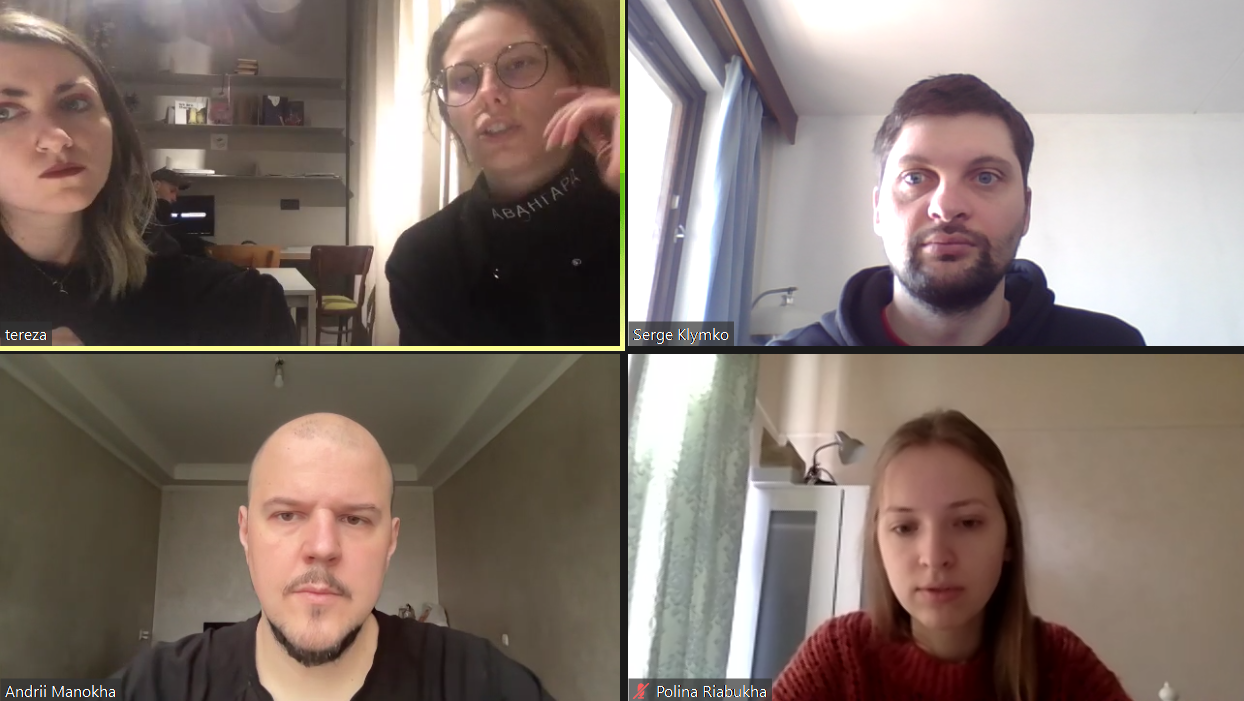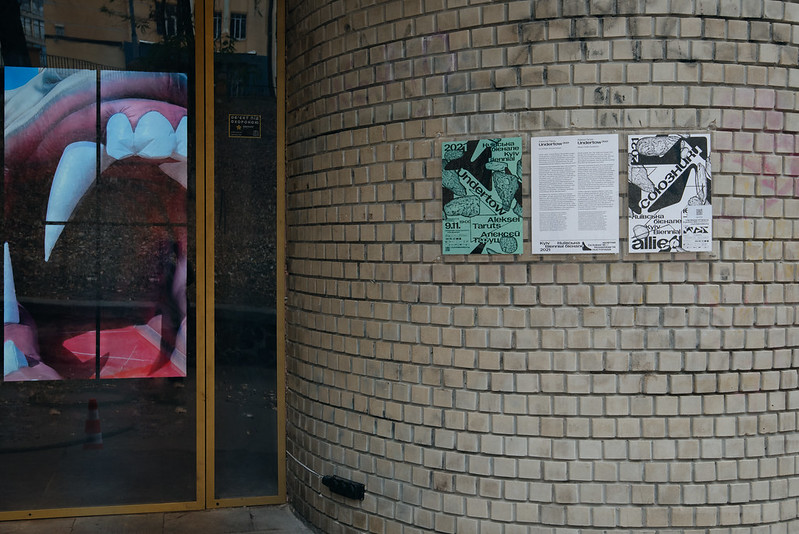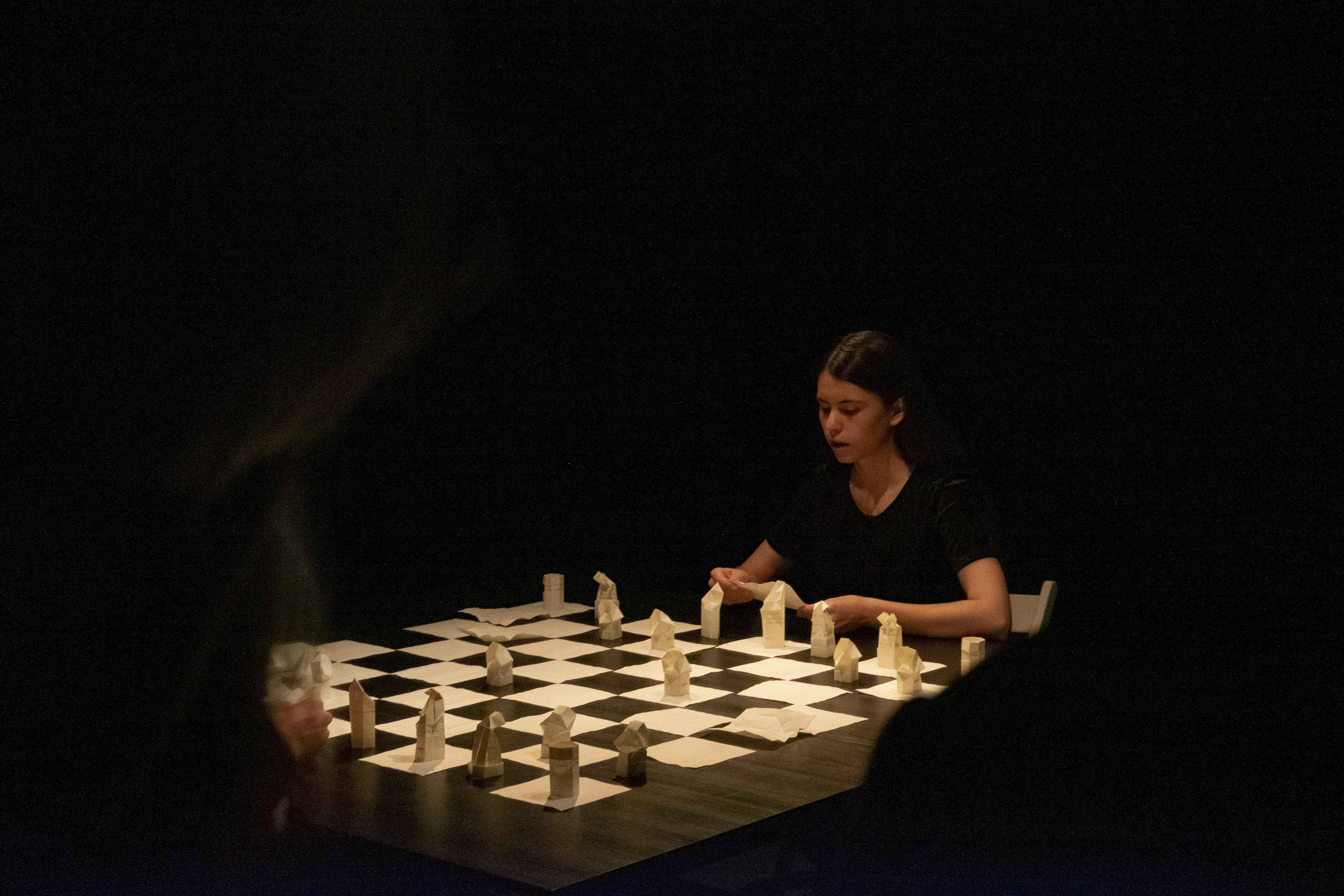We met Serhiy Klymko during an online interview, at a very newly established situation happening in Ukraine. Missile attacks on Ukrainian infrastructure have been causing issues with electricity and internet connection, making the communication with the rest of the world quite difficult. The cultural manager at the Visual Culture Research Center and founder of the Emergency Support Initiative explained how he managed to create a team through the Kyiv Biennial and offer help to the Ukrainian artists and creators in need. The team is currently spread across Europe but has managed to provide assistance to more than 700 people. The Emergency Support Initiative continues to help artists and cultural workers in Ukraine and on the occupied territories, supporting the creation of the new artistic projects and productions and organising fundraising events all around Europe.

How was the Emergency Support Initiative created?
I’m part of the Kyiv Biennial team and Visual Culture Research Center organisation and from the first days of the war we started to receive a lot of emails and messages from partners, friends, colleagues from Europe and abroad asking how they could help us. I moved to the Western Ukraine for a couple of months at the beginning of the war. So I thought that probably we can not receive the help, but we can help others by using this opportunity that was proposed to us and redirect it to other people and organisations who are really in need. We started the Emergency Support Initiative in the beginning of March with requests from social media to provide help to artists and cultural workers. First it was just Instagram or messages and we transferred some money. So at first we collected funds mostly from private donors and directed them to people who messaged us.
How many people work for the Support Fund Initiative?
It varies, but approximately five to six people.

Did you create a new team apart from Biennial for the Emergency Support Initiative?
They are two different teams. The Emergency Support Initiative team was assembled specifically for this purpose and the Biennial team was unable to participate, because of other initiatives. Me and one more colleague here in Ukraine managed to create a team that is at the moment in different places, for example our designer is in The Netherlands, the project manager in Lisbon, the accountant in Estonia, so it’s quite an international team.
Are you the only one still in Ukraine?
Yes, but the project manager that we are closely working with is currently at a residency, and she will be back soon.
How did the experience in the Biennial team help you implement this Initiative?
The team is newly established but of course the background of the Kyiv Biennial helped us in terms of contacts and credibility. We usually worked with international partners and always tried to bring the international context in our events and programs. Also the co-founders of East Europe Biennial Alliance and a lot of artists and creators worked with us and donated during the first months of the initiative. So we tried to establish more connections with other people and foundations.
How do people find information about the Emergency Support Initiative and reach out? What difficulties are you facing especially with the recent attacks on Ukrainian infrastructure and the electricity and internet connection issues?
The connection problems actually just started. Until late October there was not such a problem with the internet connection, electricity or the bank system. It was a big surprise for me in the beginning of the war, everything worked perfectly. The financial system was stable. When I was in Western Ukraine, it was completely normal because there was not even a curfew there, everything was operating. We managed to do everything online without any problems until now. The artist and cultural workers there were able to apply through our website through the application form. If somebody didn’t manage to do that, then they would just write to us on Facebook or Instagram and we would help them directly. Now it’s really a new situation, I don’t know how it’s going to move on because just two days ago it was the first total blackout in Kyiv and the region. All the city was in darkness, a huge city. Nothing worked, no light, no anything. It was a new situation. I’m not ready to answer this question. It also depends on how often this will happen, but it might be a problem and we might create new channels. Our phones are working normally. Now the state authorities are making these public points for charging phones and heating with access to the internet and more functions. There are already 4.000 such points of support around the country, in every city and village.

Can you describe the procedure to apply and the selection criteria? How many applications have you received so far?
We have received more than 2.000 applications and managed to support around 700 people and 20 projects. Since this summer we also started to support small scale artistic projects connected to the war in Ukraine. Some of them have already been completed but most of them are in progress. For example there are a number of short documentaries, classical academic music pieces from two very talented Ukrainian composers who will need funding to create it, and already three exhibitions of contemporary art supported in Lviv and Kyiv. We are a small independent organisation trying to support as many people as possible. We try not to have aesthetic judgement on the applications, but we are operating in contemporary and visual arts mainly, which is our priority together with independent music, outside the commercial sector. Also performative or video art which doesn’t produce any commercial material. We support these kind of projects and also judge upon the location. Applyers are mostly from eastern regions because eastern and southern regions are the most affected by the war. So if we receive for example similar applications from Kharkiv and Lviv, we will try to support Kharkiv, because the situation there is much more complicated.
How does the support of artists and cultural workers that remain in the occupied territories work?
We try to support people from occupied territories. It also depends on the current situation on the specific occupied territory. If people have a Ukrainian mobile connection for PrivatBank online (the biggest bank in Ukraine with advanced e-banking) they can receive support from us. If they don’t have a Ukrainian number they can not, because the Ukrainian sector of the internet is blocked from Russia’s side and the traffic is redirected. We supported the museum workers who were still in the museums on the occupied territories. It was mostly frontline regions, because it is quite unstable and changing. Now things are very problematic for those in the occupied territories because there is no ukrainian connection there. If we receive an application from them we don’t have any restrictions on that. We also supported a theatrical director in an occupied territory whose play was produced in Ukraine by Ukrainian actors and a Ukrainian team. So the director, actors and team worked on it online. The approximate number of people in the occupied territories is in general maybe 10-15% of the total population.

What kind of support do you provide? Is it only financial?
Mostly financial, but we launched a program together with European partners for an emergency residency program for Ukrainian artists, three in Ukraine and three in an EU country. It was a joint open call for artists who needed a place to work and stay. We also support some artistic projects with consultation or knowledge we can provide, or some equipment we have as the Biennial but it’s not our main activity.
Who are the donors of the Emergency Support Fund?
There is a list of the donors on our website. The majority of them are private donors, but the foundations are able to support more sustainably. Now it’s about 10 foundations that supported us with different amounts of money. We accept donations only from abroad. Everybody in Ukraine donates to the army or the volunteers. It was a major problem for the ukrainian cultural sector because for the last three or four years the major operator of the cultural grants was the state funded Ukrainian Cultural Foundation that currently couldn’t contribute. Hundreds of projects applied were accepted and later denied after the war started. Thousands of people found out that they won’t be supported and many of them applied to us instead.

How is the art sector currently in Ukraine?
Arts and culture is still happening, wherever possible mostly in the Western Ukraine, in venues or old buildings. For example in Lviv there is a group of artists in the Odessa ship repairment factory and they created quite a big cultural spot there. Cultural events are mostly using old cultural infrastructure, like the House of Culture scene or galleries. Lviv is still super vibrant. Especially the first month there was a huge art crowd there, from all over Ukraine and it created a really interesting mixture of artists with different projects from all over the country. Lviv has like 5-6 exhibition openings every week and a lot of concerts. Kyiv is not so active. The cultural life in Kyiv went down and it is also connected to the curfew. Kyiv is famous for raves and club culture and it’s not possible to do that during the war. There are some concerts, parties and exhibitions but it’s less active than before. Almost all cultural events are with a fundraising purpose to donate to the Ukrainian army or separate units of the army and medical staff. The Cultural scene in Ukraine is quite actively volunteering.
What are other ways of fundraising except for donors and how do you attract new donors?
We actually don’t have time to attract new donors. Thanks to the internet they are funding us by themselves mostly so we received funds from people that we didn’t know before, cultural organisations and foundations. We almost don’t do any applications, fortunately, because we don’t have time. Usually we send a letter about the reason we apply and get a response. We had a number of solidarity grants from people we mostly didn’t know and organised a number of cultural solidarity fundraising events, the latest one was in Norway. There was also a Bandcamp album release and the money was donated to Ukrainian people.
Find out more about the Emergency Support Initiative here. You can support the project and the Ukrainian people by donating here.
EU supports Ukraine through culture
The European Commission is mobilising its instruments to support Ukrainian artists and culture professionals and to support the protection of cultural heritage.
Support for Ukrainian artists, cultural and creative professionals and organisations
The 2023 Creative Europe annual work programme includes a special action of €5 million to support Ukrainian artists and cultural organisations to create and showcase their art and works. The aim of this is to help in the welcoming of Ukrainian displaced people, children in particular, while preparing the post war recovery of the cultural and creative sector in the medium term.
The program was open for applications until November 2022 but you can learn more about Creative Europe's support of Ukraine here.
Culture Moves Europe, Creative Europe’s new mobility action is open for Ukrainian artists and creative professionals as well.
"I would like to express my full solidarity with the Ukrainian artists, creatives, culture professionals, and of course, cultural heritage and all cultural and creative sectors. They are the beating heart of Ukraine, and their work epitomises the Ukrainian history, identity, language, and hopes for the future. They are also part of our common European identity, made of a mosaic of cultures, in full respect of cultural diversity."
- Mariya Gabriel, EU Commissioner for Innovation, Research, Culture, Education and Youth
Read the full statement here.
The Commission encourages project proposals for 2022 and 2023 culture calls to involve Ukrainian artists and organisations and will allow maximum flexibility for ongoing EU-funded projects involving Ukrainian partners.
“Creatives Unite”, a platform, for and by cultural and creative sectors and co-funded by the EU, is collecting and rendering public initiatives from the European networks supported through the Creative Europe programme and beyond. Cultural and creative sectors, Member States and other actors can use the platform to inform about their initiatives and responses to the crisis.
Support for the protection of Ukrainian cultural heritage
The Commission will launch a dedicated action on sharing expertise and capacity building of Ukrainian professionals for the reconstruction of cultural heritage sites.
The Commission stands ready to deliver emergency equipment for the protection of Ukrainian cultural heritage under the EU Civil Protection Mechanism (UCPM).
The EU is exploring possibilities for protection and reconstruction of destroyed Ukrainian cultural heritage under the Neighbourhood, Development and International Cooperation Instrument (NDICI).
The European Competence Centre for Cultural Heritage (4CH) has launched “Save the Ukraine Monuments”, an initiative to save the digital documentation of Ukrainian cultural heritage, to preserve its memory and support the future restoration of assets from the damages caused by the war.
The #ARTvsWAR campaign launched by the EU on 18 April is drawing attention to the destruction of cultural heritage, initiatives to preserve it and the vibrancy and resilience of Ukrainian artists, cultural professionals and citizens in general.
Myriam Patrou
Myriam Patrou













